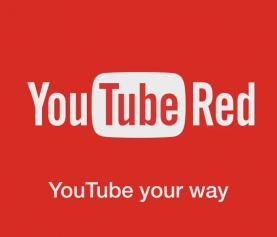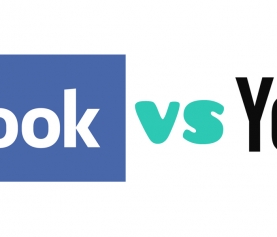Life Outside YouTube: Other Places to Host Your Videos
Has YouTube Red got you feeling a little bit nervous about the future of your content on the platform? Did you refuse to sign the new subscription agreement (or weren’t able to like ESPN) and now YouTube has blocked your content from ever being seen by anybody ever again? Or do you just want to poke around and see what else is out there in case YouTube users revolt en masse at the idea of subscriptions? Regardless of your reasons, the launch of YouTube Red is a good time to at least revisit what other options are out there for your video content.
We took a look at some of the top video platform competitors for amateurs and professionals. Here are some of the best options if you’re breaking with YouTube:
The Story of Vimeo from Vimeo Brand Partnerships on Vimeo.
1. Vimeo – While YouTube can have anything from cat videos shot on a cell phone in 2006 to full length movies, Vimeo is the go-to for many professional and artistic videographers. Vimeo receives 170 million unique visitors per month and simply cannot be ignored. If a video uploaded to Vimeo is of high enough quality, it can be promoted to the front page and receive a gigantic audience. If you’re trying to decide whether or not your content will be successful on Vimeo, check out some of the popular videos on the front page and around the web so you can see if your tone fits with what is working on the site. Even if your videos aren’t super artistic or you’re not a professional, Vimeo is definitely the best alternative to YouTube in terms of platform support, audience, and metrics.
2. Facebook – The social media giant is seriously gunning to become more than just the place where your friends post too many baby or vacation pictures or a place you scroll through when you’re bored. They’ve made several big improvements to their video platform, including sharing ad revenue with video creators, putting their video platform in direct competition with YouTube. If you’re looking for a platform with a large audience base, Facebook will definitely work well for you (when a near quarter of the world’s population is on the platform, audience is the last thing you need to worry about). But if you’re looking for longevity you might be better off with Vimeo, once a video passes out of users’ newsfeeds, it tends to drop significantly in its engagement – something Facebook will need to figure out if they want to be a serious contender in the video hosting world.
3. Video Monetization Sites – If you’re more interested in monetizing your videos rather than having lots of people view them, you may want to consider one of the many platforms for video monetization. These sites are as far from YouTube as you can get, but if you’re serious about licensing your video content, and have a pretty solid list of customers interested in doing it, this might be a good option for you. Typically these sites will allow you to have personally branded page that hosts only your content that you can drive potential customers to so they can view and license your content. Some companies that you may want to consider if you go this route: Brightcove, MediaShowroom, or Kaltura are good options depending on what you want out of your video management platforms.
No matter what platform you end up choosing to go with – even if you’re sticking with YouTube, you need a simple and effective way to move your videos around. Wispeo helps you share videos that aren’t for the masses, simply and effectively. Plus, Wispeo is now mobile! You can easily share long videos from your phone with anyone who wants to see them – or just send them to yourself so you can easily edit them on a desktop computer. Get the easiest way to share videos and photos from your phone in the App Store or from Google Play.





